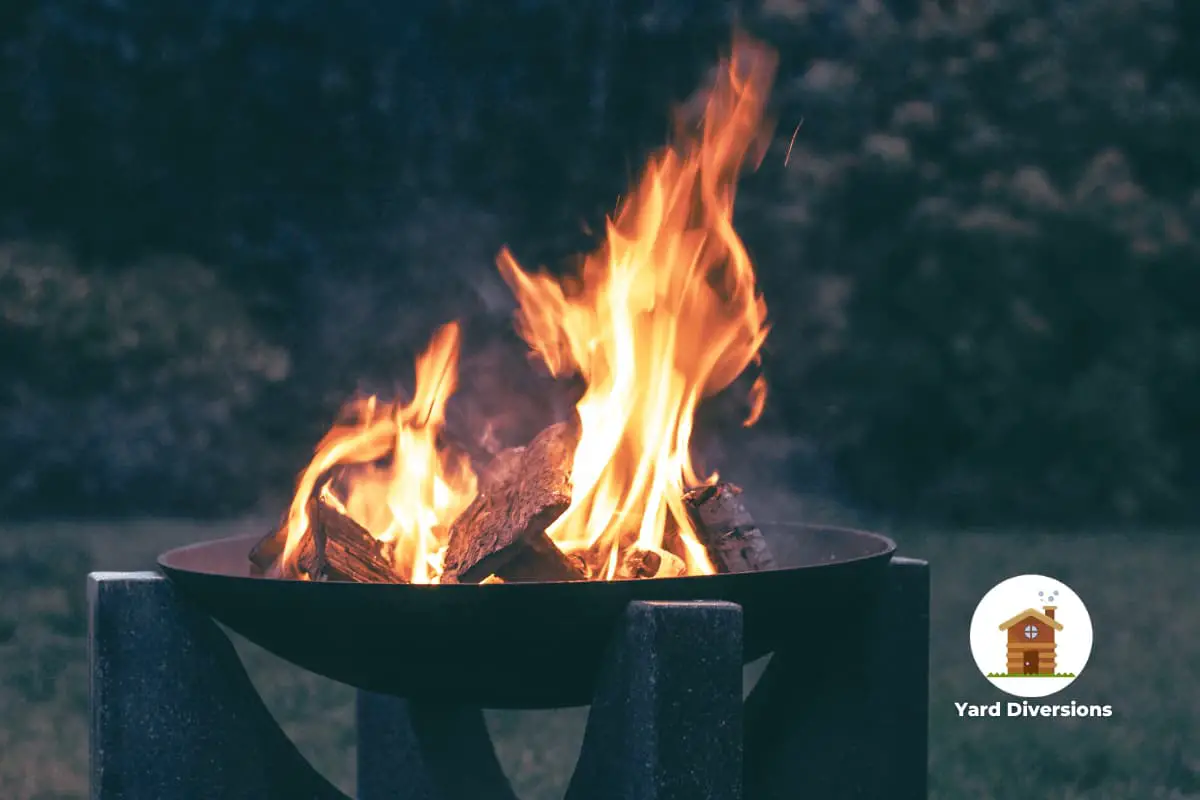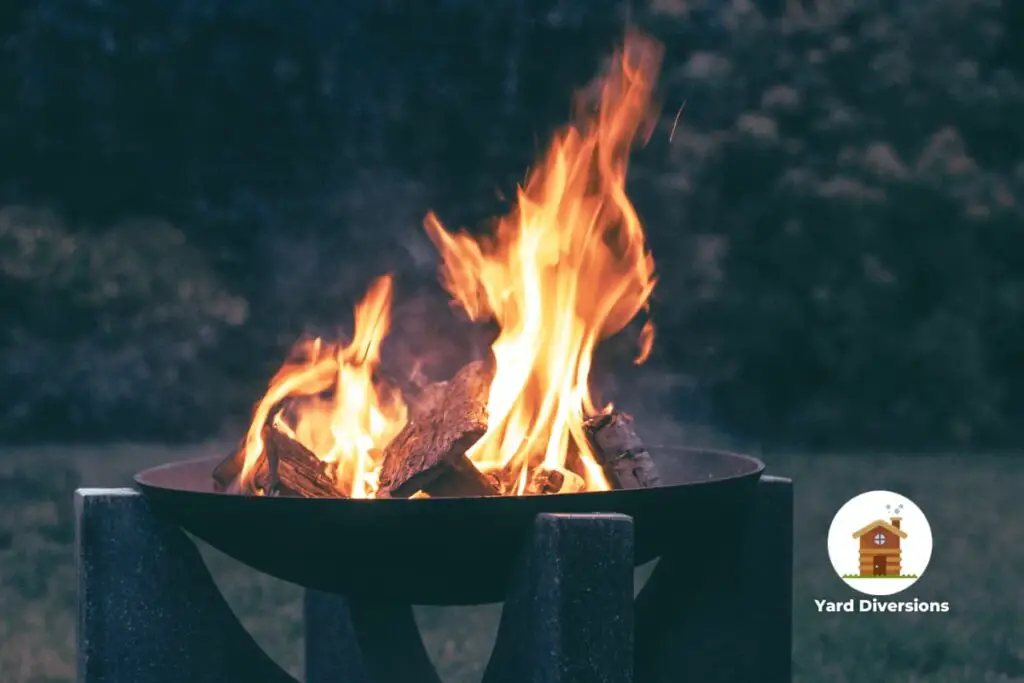When it comes to enjoying a pleasant outdoor fire with friends and family, safety should always be your priority.
Part of that is knowing your area’s laws and regulations governing fire pits and other outdoor fire sources. So, you may wonder: can I have a fire pit in my backyard?
Having a fire pit in the backyard is entirely okay if you follow the basic rules. The state, county, or city may restrict where, when, and how the individual can use it.
In this article, we will go over some of the most common fire pit laws and regulations to ensure you are following the rules.
So, let’s get started!

Fire Pit Laws And Regulation
Fire pits are a great way to enjoy the outdoors. But it’s essential to understand the restrictions in your area before you light that first spark.
States, counties, and municipalities have different fire pit laws and regulations.
So, it’s important to understand what is and isn’t allowed in your area. Following are some basic things to consider if you’re wondering about the legalities of having a fire pit in your area.
- What counts as a recreational fire in your area?
- Open-burning, and is it legal in your area?
- What types of fires in your area need a county or local license?
- If a local regulation requires fire pit distance from buildings
What Counts As A Recreational Fire In Your Area?
The first thing to consider is what your local area considers a recreational fire. This is an important distinction, as a recreational fire differs from an open-burning fire.
A recreational fire is generally defined as an outdoor fire that burns things other than trash and where the fuel isn’t stored in an incinerator, barbecue pit, barbecue grill, or outdoor fireplace.
In addition, it has a maximum fuel area of 3 feet or less in diameter and 2 feet or less for enjoyment, religious, ritual, cooking, warming, or similar reasons.
Recreational fires typically require a fire pit made of non-flammable materials. These fires need to have a reasonable distance from buildings and combustible materials.
What Is Open-burning, And Is It Legal In Your Area?
Open-burning is different from a recreational fire. It usually involves burning large amounts of material, such as yard waste, paper, or wood.
The burning of materials in which the combustion products are discharged directly into the surrounding air from an enclosed chamber without passing via a stack or chimney.
Road flares, smudge pots, and other similar items used for safety or occupational purposes are not considered open-burning or recreational fires.
Open burning is typically illegal in most areas. This is because it produces a large amount of smoke and ash that can cause air pollution.
If you’re thinking of burning yard waste, check with your local government to see if it is legal.
What Types Of Fires In Your Area Need A County Or Other Local License?
Sometimes, you may need a license for certain types of fires, such as bonfires or commercial fires. Open burn fires like small campfires and fire pits do not need a burn permit.
The type of license you need will depend on the type of fire and the local regulations in your area.
Before you start a fire, make sure to check with your local government to make sure you have the proper license.
If A Local Regulation Requires Fire Pit Distance From Buildings
Many local governments have regulations regarding the distance a fire pit must be from buildings.
Sparks or embers from the fire can cause significant problems if they come into contact with combustible materials.
Double-check with your local government before starting a fire in your area. This is to make sure that you’re following the proper safety protocols.
Common Fire Pit Laws For Backyard Fire Pits
A backyard fire pit can be a great way to enjoy an evening. But it is vital to know the laws and regulations surrounding its use.
While laws vary from place to place, here are some common fire pit laws you should consider when constructing your fire pit.
Fire Pit Placement and Measurements
The height of the fire should be a maximum of three feet high. This ensures that the fire is safely contained and is not a hazard to anyone.
Additionally, it is crucial to ensure that no tree branches are hanging over your fire pit, as these could easily catch fire.
The fire pit should be a minimum of 10 feet away from your property line. This is to ensure that the smoke from your fire is not a nuisance to your neighbors.
Also, the fire pit should be 20 to 25 feet from your house. This ensures that your fire pit is far enough away that embers won’t reach your home and create a fire hazard.
When using your fire pit, it is important to consider wind speed. Wind speeds should be below 15 miles per hour.
Any higher speeds could cause your fire to spread beyond the fire pit, which can risk your home, your family, and your neighbors.
What You Can and Can’t Burn in Your Backyard Fire Pit
Regarding backyard fire pits, there are certain items you can and cannot burn. Following these laws is essential, as burning the wrong materials can lead to air pollution, fires, and other serious consequences.
The most common items you can burn in a backyard fire pit include Hickory firewood, Ashwood, Cedar, natural wood, and charcoal.
Burning these materials will produce less smoke and embers. You should also check the local fire codes to ensure that the material you’re burning is allowed.
On the other hand, there are some materials that you should never burn in a fire pit. This includes:
- Paper
- Green Leafy Branches
- Pressure Treated or Painted Wood
- Trash
- Poison Ivy
- Magazines
- Plastics
- Rubber
- Styrofoam
- Any other materials that are not natural.
These materials can produce toxic fumes, so it’s best to keep them away from the fire pit.
Supervision Regulation
The most important rule regarding fire pits is to ensure proper supervision. This means having an adult present to watch over the fire. Parents and adults should never leave the fire pit unattended.
Extinguish the fire completely before stepping away from the fire pit, ensuring the coals are no longer red. Even when the flames are out, you must keep an eye on your backyard fire.
A strong wind blow may start the fire again if there are still enough burning embers left over. So, you must spread out and stir the coals with dirt or sand after enjoying your backyard fire to ensure it’s fully extinguished.
Additionally, you must always have an emergency fire extinguishing method available.
Make sure it’s ready to use in an emergency, whether you extinguish the fire with a bucket of water or a garden hose.
Are There Any Regulations Regarding Cooking Over a Fire Pit in Backyard?
Yes, there are regulations you need to consider when roasting marshmallows over fire pit in your backyard. It’s important to check local ordinances, as some areas may prohibit open flames or require a permit for recreational fires. Safety measures, such as keeping a fire extinguisher nearby, are also crucial.
Conclusion
Before deciding to have a fire pit in your backyard, it is essential to be aware of fire pit laws and regulations.
Based on the information above, hopefully, now you know the answer to the question, can I have a fire pit in my backyard?
Depending on the local regulations, a permit may be required, fire pits may have to be a certain distance away from structures, and certain restrictions may be placed when they can be used.
Fire pit safety must also be considered, as any outdoor fire can become dangerous if not managed correctly.


